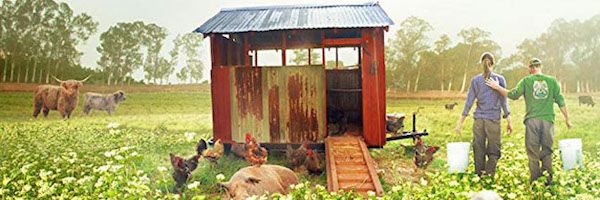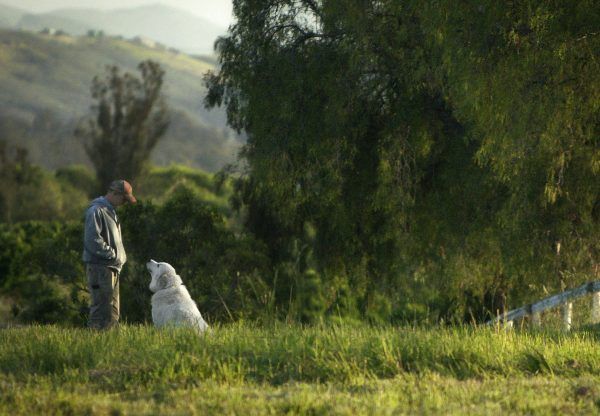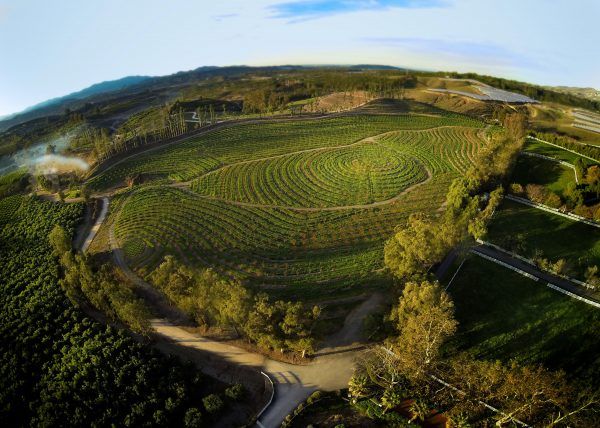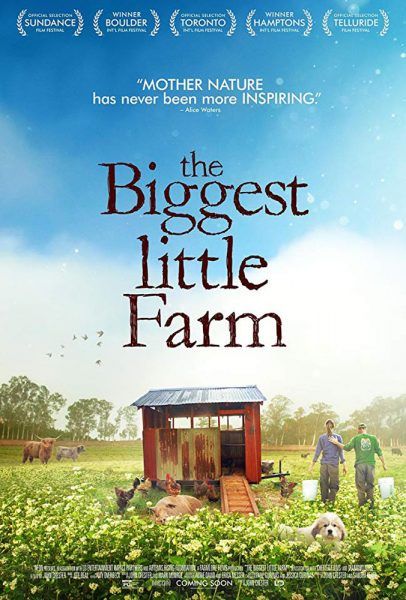The journey depicted in John Chester’s documentary The Biggest Little Farm is meant to be inspiring. You see John and his wife Molly Chester, two people who were newcomers to farming, try and succeed at an ambitious project of living in harmony with the chaos of nature. But watching all their trials and tribulations, I couldn’t help but be astonished at how hard it was and see why it was so unusual that anyone would attempt to live this way. On the one hand, I have to applaud the Chesters for pursuing their dream, but as it’s shown in The Biggest Little Farm, despite the overwhelming beauty and rebalancing of nature, that dream can frequently look like a nightmare.
In 2010, John and Molly Chester were pushed by their dog Todd to pursue their dream. Todd was a rescue who was very lovable, but barked all day when they were gone, which made apartment living impossible. This spurred the couple to get investors and buy 200 acres about an hour north of Los Angeles where they would hope to live in harmony with nature. Rejecting the monocropping of major agribusiness, John and Molly, with the help of farming expert Alan York and some experienced labor, began the long and arduous process of taking land where the soil was dead and rejuvenating it into a viable farm. What they discovered was a constant give and take where the “highest level of biodiversity possible” usually meant contending with different creatures that want to destroy everything you’ve built.
John’s background as a cameraman for nature documentarians becomes one of the film’s greatest assets as The Biggest Little Farm isn’t really about John and Molly as much as it’s about nature. Nature is the main character in this story, and watching it toss John and Molly around is both riveting and heart-wrenching. For example, they discover that eggs are one of their best crops, so they stock up on chickens. But that puts them into conflict with the local coyotes. They try to build better fencing, but it doesn’t stop the coyotes (you’re going to see quite a few dead animals in The Biggest Little Farm, so just prepare for that). So how do you stay in balance with nature? Do you kill the coyotes? Again and again, John and Molly find that their good intentions aren’t necessarily matched by the hostility of nature.
But there’s also remarkable beauty in what they’re doing, and when life comes into balance, it’s kind of breathtaking. Because John and Molly were insistent on having so many different kinds of livestock, they had a solution when snails started to eat the plants that were essential to their entire ecosystem. They simply unleashed an army of ducks, and the ducks gobbled up all the snails. They never had to resort to pesticides and rarely had to resort to taking the matter entirely into their own hands. As John says, they learned that observation plus creativity would usually yield a solution to their problems.
However, thinking the farm would settle into a routine was a bit of a pipe dream because nature is inherently chaotic, especially nature in the 21st century where you suffer through long droughts or raging wildfires. This means that while it’s great to have ideals, you have to confront which of those ideals will be sacrificed at the alter of pragmatism. I loved how The Biggest Little Farm never shied away from how hard farming was, not because the Chesters were ill-prepared or didn’t take farming seriously, but because nature does not care about our nice ideas about living alongside it.
Sometimes when I’m watching a documentary about someone succeeding against the odds, I’m inspired to follow their lead or take lessons from their story. With The Biggest Little Farm, I simply got confirmation that nature is not to be messed with and that it’s far more complicated and elegant that we can discern. To the film’s credit, it’s not necessarily arguing that we should all try to live like John and Molly. Rather, in its best moments, The Biggest Little Farm shows the striking duality of nature, a system so fragile that it needs the right food chain in place to keep thriving, but also so hearty that it will easily succeed if all humans disappeared tomorrow. The Chesters didn’t have to go to some far-flung rainforest or jungle to see this striking beauty and horror. They were able to build it themselves.
Rating: A-




